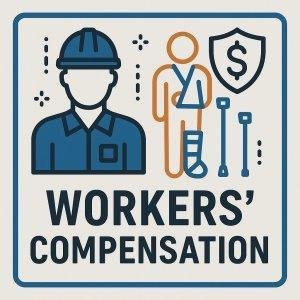Quick Workers’ Comp Quotes—Recruitment Agency
July 29, 2025Security Guard Workers’ Comp Quote Checklist: Everything You Need Ready
July 29, 2025Understanding why two seemingly similar businesses can face vastly different workers’ compensation insurance premiums is crucial for business owners and risk managers alike. Workers’ compensation rates are influenced by a complex mix of factors beyond mere industry classification, including claims history, payroll size, and workplace safety protocols. This article delves into the key elements that drive these rate variations, providing a clear explanation of how premiums are persistent and what business owners can do to manage thier costs effectively. By demystifying the rate-setting process, we aim to equip readers with the knowledge needed to make informed decisions and optimize their workers’ compensation expenses.
Table of Contents
- Understanding risk Classifications and Their Impact on Premium Calculations
- Analyzing Payroll and Its Influence on Workers Compensation Costs
- The Role of Claims History and Safety Programs in Rate Determination
- Strategies for Reducing Workers Compensation Premiums Effectively
- Q&A
- The Way Forward
Understanding Risk Classifications and Their Impact on Premium Calculations
Risk classifications play a pivotal role in determining workers’ compensation premiums by categorizing businesses according to their specific operational hazards. Insurance providers assess these classifications to estimate the likelihood and severity of workplace injuries. Even businesses that appear similar on the surface can have vastly different risk profiles based on factors such as the nature of tasks performed, the work habitat, and historical claims data. For example, two construction firms might differ in complexity of projects, use of heavy machinery, or employee safety protocols, leading to distinct classifications and premium rates. These classifications are typically assigned numerical codes that directly influence the rate per $100 of payroll, making accurate classification essential for fair premium pricing.
Several elements impact risk classification, including:
- Work activity type and exposure to hazards
- Experience modification factor derived from past claims
- Geographic location and regulatory environment
- Workforce skills and safety training rigor
To illustrate the impact of risk classification on premium calculations, consider the simplified table below:
| Business Type | Risk Classification Code | Base Rate per $100 Payroll | Experience Mod Factor | Estimated Premium |
|---|---|---|---|---|
| Warehouse Operations | 8017 | $1.50 | 0.90 | $13,500 |
| Manufacturing - Light Assembly | 8742 | $3.75 | 1.10 | $22,000 |
In this example, two businesses with similar payrolls face vastly different premiums as of their distinct classifications and experience modification factors, highlighting why nuanced differences can dramatically affect workers’ compensation costs.
Analyzing Payroll and its Influence on Workers Compensation Costs
Payroll serves as a critical factor in calculating workers compensation premiums, as it directly correlates to the amount of risk and potential exposure an insurer assumes. The size of a business’s payroll indicates the scale of its workforce, and a larger payroll often means greater financial duty for claims. However, it’s not just the total payroll amount that influences costs-how the payroll is distributed among various job classifications also plays a vital role. Different roles carry distinct risk levels; for example, administrative staff typically have lower risk weights compared to manufacturing or construction workers.Insurers apply classification rates to these payroll segments, which can substantially affect the final premium.
Understanding the nuances of payroll allocation helps explain why two seemingly similar businesses might pay different workers comp premiums. Elements that impact these variations include:
- Classification codes: Specific job duties and industry sectors influence risk categorization.
- Payroll Accuracy: Inaccurate or misclassified payroll can lead to incorrect premium assessments.
- Experience Modification factors: Claims history can adjust costs up or down relative to payroll size.
The table below highlights hypothetical payroll distributions and their relative classification impact for two similar manufacturers:
| Payroll Segment | Business A Payroll ($) | Classification Rate | Business B Payroll ($) | Classification Rate |
|---|---|---|---|---|
| Machine Operators | 500,000 | 15.0 | 300,000 | 15.0 |
| Assembly Workers | 300,000 | 12.0 | 600,000 | 12.0 |
| Office Staff | 200,000 | 1.5 | 200,000 | 1.5 |
The Role of Claims History and Safety programs in Rate Determination
Insurance providers heavily weigh a business’s claims history when determining workers’ compensation rates. A history marked by frequent or severe claims signals a higher risk, which naturally drives up premium costs. Conversely, a clean or low claims record can lead to notable discounts. this aspect encourages businesses to invest in proactive safety measures and effective incident reporting, as these steps directly impact their future costs. Incorporating safety programs also reflects a commitment to workplace well-being, often resulting in fewer claims and improved insurer trust.
Many businesses implement tailored safety programs that focus on hazard identification, employee training, and continuous improvement. These programs not only reduce workplace injuries but also contribute to more favorable rate adjustments over time. Insurers may offer premium credits or other incentives to companies that document and maintain rigorous safety standards. below is a simplified comparison illustrating how claims history and safety initiatives influence premium rates:
| Business Profile | Claims History | Safety Program | Impact on rate |
|---|---|---|---|
| Company A | Low Claims | Complete | Lower Premiums |
| company B | Frequent Claims | Minimal | higher Premiums |
Strategies for Reducing Workers Compensation Premiums Effectively
controlling workers’ compensation premiums begins with a proactive approach to workplace safety and risk management. Businesses that implement comprehensive safety protocols, regular employee training, and incident monitoring frequently enough enjoy lower claims frequency, which insurers reward with reduced rates. Prioritizing a culture of safety not only minimizes accidents but also demonstrates to underwriters a commitment to risk reduction, creating a positive impact on premium calculations.
Another effective method involves leveraging detailed claims analysis to identify patterns and address specific operational vulnerabilities.Employing targeted interventions, such as ergonomic adjustments and updated equipment, can reduce injury severity and claim costs. Additionally, consider these strategies:
- Class Code Review: Ensure your employees are correctly classified to avoid overpaying for higher-risk categories.
- Experience Modification Factor (EMR) Management: Actively manage your EMR by controlling losses and disputing incorrect claims.
- Return-to-Work Programs: Facilitate injured employees’ early reintegration to work, reducing claim duration and costs.
- Regular Policy Audits: Regular audits can detect billing errors or needless coverage that inflate premiums.
| Strategy | Impact on premiums | Implementation Effort |
|---|---|---|
| Safety Training Programs | High | Moderate |
| Claims Analysis | Medium | High |
| Class Code Verification | Moderate | Low |
| Return-to-Work Initiatives | High | Moderate |
Q&A
Q&A: Workers Comp Rates Explained – Why Two Similar Businesses Pay Different Premiums
Q1: What factors influence workers’ compensation insurance rates?
A1: Workers’ compensation insurance rates are influenced by a variety of factors including the nature of the business, the type of work performed, historical claims data, payroll size, industry risk classifications, location, and individual insurer underwriting criteria. Even businesses that seem similar can have different risk profiles that affect their premiums.
Q2: How does the classification code impact workers’ comp rates?
A2: Each job or industry is assigned a classification code that reflects the level of risk associated with the work performed. Higher-risk classifications typically incur higher rates. two businesses operating in the same industry may have slight differences in classification codes, leading to different premium rates.Q3: Why would two similar businesses with comparable payrolls pay different premiums?
A3: Differences in premiums can arise due to varying loss histories, safety programs, employee turnover rates, or even differences in claims frequency and severity. An insurer’s experience modification factor, which adjusts rates based on past claims, can significantly impact premiums.
Q4: What role does experience modification factor (mod) play in workers’ compensation premiums?
A4: The experience modification factor is a multiplier applied to a business’s base premium, reflecting the business’s past workers’ comp claims compared to others in the same classification. A mod greater than 1.0 indicates a higher-than-average claims experience, increasing premiums, while a mod below 1.0 results in lower premiums.Q5: Can safety programs and risk management influence workers’ comp rates?
A5: Absolutely. Effective safety programs and proactive risk management can reduce workplace accidents and claims, positively affecting a company’s loss history and experience modification factor.Insurers often provide premium credits or discounts for businesses that demonstrate strong safety measures.Q6: How do location and state regulations affect workers’ compensation premiums?
A6: workers’ compensation is regulated at the state level, and rates can vary significantly due to differences in state laws, benefit mandates, and insurer competition. Two similar businesses located in different states may face different rate structures and premium requirements.
Q7: Are premiums impacted by the insurer chosen?
A7: Yes. Different insurance carriers have varying underwriting guidelines, pricing models, and risk appetites. Consequently, two businesses with similar profiles may receive different premium quotes depending on the insurer.
Q8: What steps can businesses take to manage and potentially reduce workers’ compensation costs?
A8: Businesses should invest in safety training and programs, maintain accurate payroll and classification reporting, monitor and manage claims promptly, shop around for competitive quotes, and work with insurance brokers or consultants to optimize coverage and costs.
Q9: Is it possible for a business to negotiate their workers’ comp premium?
A9: While rates are regulated in many states, businesses can often negotiate aspects like deductibles, payment plans, or seek preferred provider arrangements.demonstrating strong safety performance and loss control can also provide leverage when discussing premiums with insurers.
Q10: How frequently enough are workers’ compensation premiums reviewed and adjusted?
A10: Premiums are typically reviewed and adjusted annually during policy renewal. Adjustments are based on updated payroll figures, claims experience, changes in classification codes, and revisions to state rate filings. Maintaining good records and communication with your insurer helps ensure accurate premium calculations.
This Q&A aims to clarify why two seemingly similar businesses might pay different workers’ compensation premiums, highlighting the complexity behind rate determination and the importance of risk management.
The Way Forward
Understanding the factors that influence workers’ compensation rates is essential for business owners seeking to manage costs effectively while ensuring compliance and protection for their workforce.As we have explored, even two seemingly similar businesses can experience significant differences in premiums due to variations in industry risk classifications, claims history, payroll size, and state regulations. By gaining clarity on these elements, employers can make informed decisions, implement targeted risk management strategies, and engage proactively with insurers to optimize their workers’ comp expenses. Ultimately,a nuanced approach to workers’ compensation not only supports financial stability but also fosters a safer,more productive work environment.
“This content was generated with the assistance of artificial intelligence. While we strive for accuracy, AI-generated content may not always reflect the most current information or professional advice. Users are encouraged to independently verify critical information and, where appropriate, consult with qualified professionals, lawyers, state statutes and regulations & NCCI rules & manuals before making decisions based on this content.







